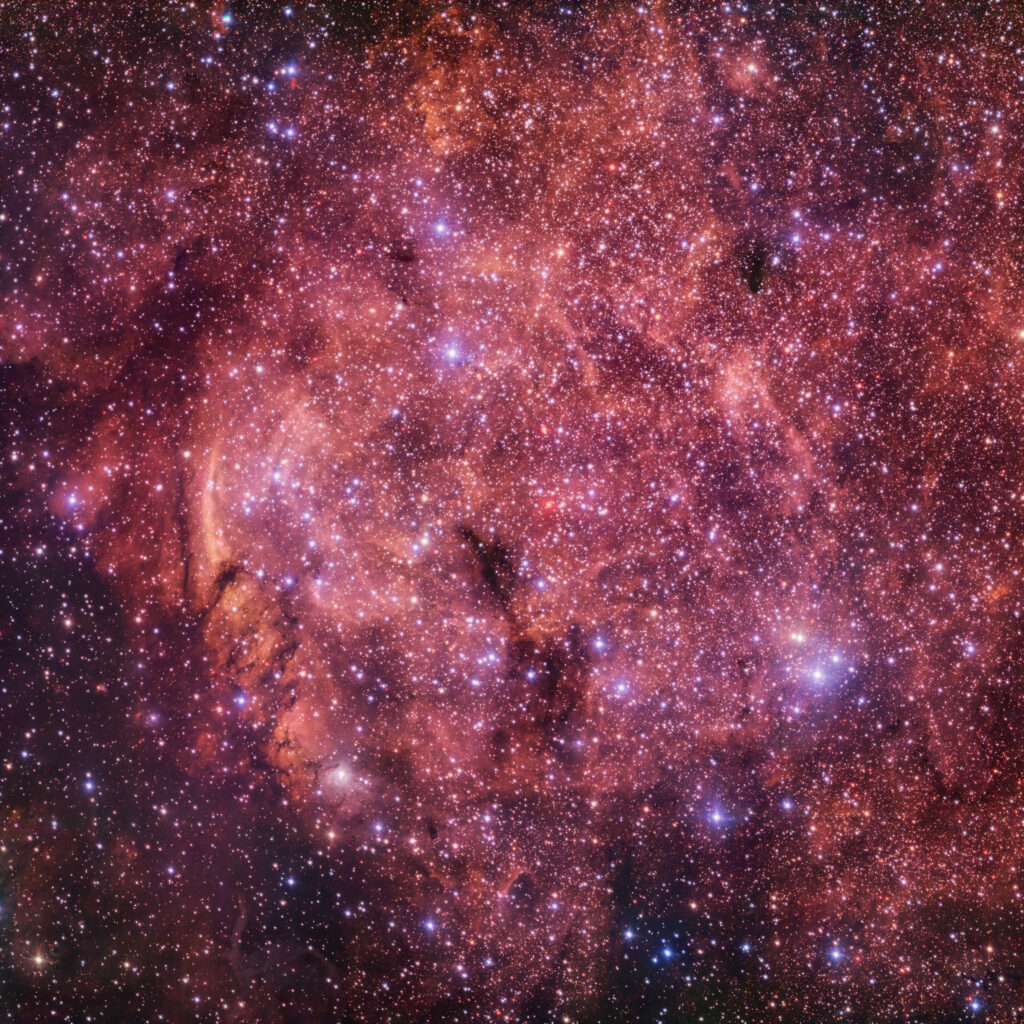The presented image was taken by the VLT survey telescope. It shows countless stars of the IC4701 nebula.

IC4701 is located at a distance of 5 thousand light-years from Earth in the direction of the constellation Sagittarius. It is classified as an emission nebula. This means that IC4701 is glowing due to the ionization of its own gas caused by the powerful radiation of newborn stars. It is the glow of hydrogen that gives it its characteristic red color.
You can also see the characteristic dark clouds in the picture. These are areas where the dust density is so high that it completely absorbs the light of background stars.
The IC4701 nebula is part of a larger gas-dust complex, which is essentially a giant stellar maternity hospital. Most of the newborn luminaries are red dwarfs, which are much colder and emit less light than our Sun. But among them there are also hotter sun-like stars and even giant stars that play the role of real beacons illuminating the galactic expanses.
Earlier we wrote about a giant oxygen nebula found inside the Andromeda galaxy.
According to https://www.eso.org
Follow us on Twitter to get the most interesting space news in time
https://twitter.com/ust_magazine
